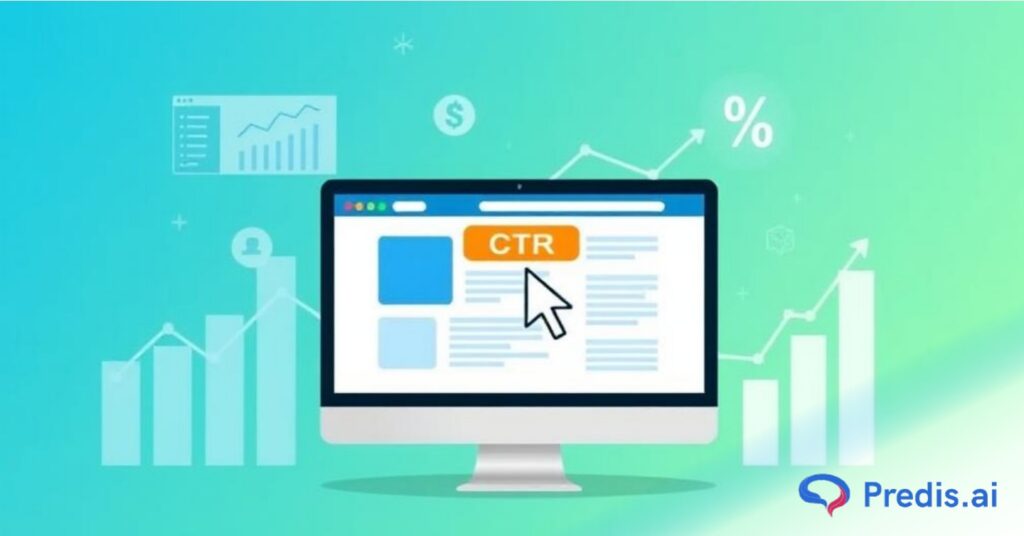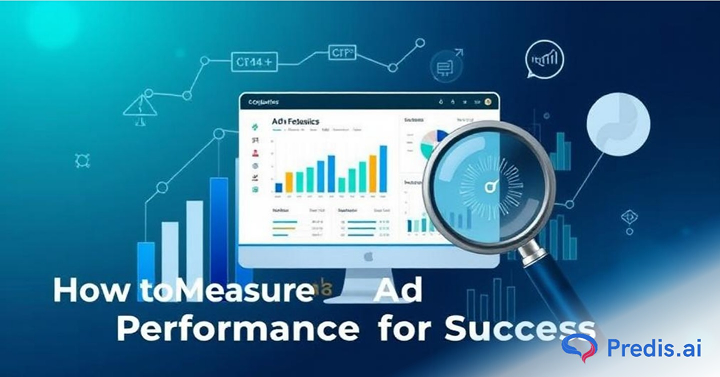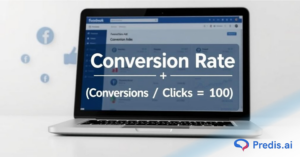Are you running a great ad campaign but have no idea how it is working or even working at all? You might have questions like, are people seeing the ad? Is it connecting with my target audience? Most importantly, is it bringing in more website visits, sales, or brand awareness?
In today’s world of advertising, data is king. Therefore, by tracking how your ads perform, you can see what’s working and what’s not. This lets you improve your campaigns and get better results.
This blog will help you decode the key metrics that will help you measure ad performance and skyrocket your growth.
Why Measuring Ad Performance Matters
Here’s why you need to measure ad performance for any business, regardless of size or industry:
- Uncover what works and what doesn’t: Running multiple ad campaigns? Tracking metrics lets you see which ones are driving the most traffic and sales. It allows you to focus your budget and message for maximum impact.
- Optimize campaigns for better results: Imagine your data shows your cost per click (CPC) is higher than expected. By analyzing user behavior and demographics, you can adjust your targeting to reach a more qualified audience, ultimately lowering your CPC and getting more out of your ad spend.
- Make data-driven decisions: Data from ad performance empowers you to make informed choices based on real results. Whether you’re allocating your budget to a new social media platform or sticking with a tried-and-tested search engine campaign, data can provide the insights to make the most strategic decisions.
- Gain a competitive edge: By analyzing industry benchmarks and competitor data, you can identify areas where you excel and where you can improve. This knowledge empowers you to refine your targeting strategy, craft more compelling ad copy, and ultimately outrun the competition.
- Improve brand awareness and customer relationships: Great advertising isn’t just about sales; it’s about building brand awareness and loyalty. Measuring ad performance allows you to track brand mentions, social media engagement, and website traffic – all valuable indicators of how people perceive your brand. This data can then be used to refine your brand messaging for even greater impact.
Sign up for Predis' mobile ad maker to ensure that your campaigns give the best performance every time!
8 Essential Metrics for Effective Ad Tracking
Here are the essential metrics you should track to gain a holistic understanding of your ad performance:
1. Click-Through Rate (CTR)

CTR is a simple but important number that tells you what percentage of people who see your ad actually click on it. Imagine 100 people have seen your ad; this is called impressions. Now, among them, only 10 have clicked on your ad, which means it has a 10% CTR.
Therefore, if your ad gets ignored, it will have a low CTR. This can happen for several reasons, including an unappealing design, a complicated message, or not reaching the right people.
So, to get a high CTR, your ad needs to be visually appealing and have a clear and interesting message. Also, make sure it grabs the attention of the right audience.
Thus, by tracking the CTR, you can identify what is working for you and what is not. This way, you can improve your ad strategy and get more clicks and results.
Want to create ads with the best CTR? Try Predis' Instagram ad maker and see your campaign performance skyrocket!
2. Conversion Rates
Doesn’t it feel great when you run an ad campaign and people click on it? But the real win is when those clicks turn into paying customers or achieve your other goals. This is where the conversion rate comes in.
Conversion rate simply means the percentage of people who click on your ad and then take a desired action. This action could be anything you want, like buying a product, signing up for a newsletter, or downloading a white paper.
High conversion rate = happy you! It means your ad is grabbing attention and convincing people to take the next step.
But what if your conversion rate is low? This could mean there’s a mismatch between your ad and your landing page (the page people see after clicking the ad). Maybe your ad promises something the landing page doesn’t deliver, or the landing page itself is confusing and hard to navigate.
By tracking your conversion rate, you can identify these issues and fix them. The goal? To seamlessly convert those clicks into customers and make your advertising efforts pay off.
3. Cost Per Mille (CPM)
CPM tells you how much you pay to reach 1,000 people with your ad. Essentially, you divide your total ad campaign cost by the number of times your ad is shown (impressions). This metric is most useful for brand awareness campaigns where you want to get your message out to a broad audience.
Think of it like renting billboard space. A high-traffic area will cost more per thousand people who see your billboard (high CPM). That might be okay if you’re targeting a specific niche group that frequents that area.
But if you see consistently high CPMs across your campaigns, it might be a sign you’re targeting the wrong audience or using expensive platforms that aren’t delivering the reach you need.

4. Cost Per Click (CPC)
CPC is the cost associated with every time someone clicks your ad. It’s calculated by dividing your total ad spend by the number of clicks your ad gets (total clicks divided by total cost equals CPC). This metric is especially important for campaigns focused on generating leads or sales, where clicks are a key step in the customer journey.
Ideally, you want a CPC that’s not too high or too low.
A low CPC might seem great at first, but it could indicate that you are target audience is too narrow and you’re missing out on potential customers. On the other hand, a consistently high CPC suggests your ad copy isn’t grabbing attention, or you’re targeting the wrong audience altogether.
By keeping an eye on CPC, you can see if you’re reaching the right people at a reasonable cost. It’s like paying for a taxi: you want to get where you need to go efficiently without spending more than necessary.
5. Cost Per Acquisition (CPA)
CPA goes beyond just clicks and impressions. It tells you exactly how much it costs to turn someone who sees your ad into a paying customer.
Think of it like this: you spend a certain amount on advertising. CPA helps you understand how efficiently that spending translates into new customers. It’s calculated by dividing your total ad spend by the number of new customers you acquire.
Here’s what a high or low CPA means for you:
- Low CPA: This is good news! It means your ads are attracting the right people and convincing them to become customers at a reasonable cost. You’re getting a good return on your advertising investment.
- High CPA: This suggests there might be a gap between your advertising and your sales funnel. Maybe your ads are reaching the wrong audience, or your landing page and sales process aren’t designed to convert clicks into customers.
By keeping an eye on your CPA to measure ad performance, you can identify areas for improvement. You can tweak your ads to target the right people and optimize your landing page and sales funnel to convert more clicks into paying customers. Ultimately, the goal is to attract the right kind of customer at a cost that keeps your profits healthy.
6. Revenue
Metrics like clicks and impressions offer clues, but for most businesses, the real win lies in revenue. Tracking the revenue generated from your advertising efforts paints a clear picture of your campaigns’ financial impact.
Here’s how to get revenue in the game:
- Attribution Models: The Credit Game: Customers often encounter your brand across multiple channels (ads, social media, organic search) before buying. Pinpointing exactly which ad campaign gets the credit can be tricky. Enter attribution models like “last click” or “multi-touch” to estimate the portion of revenue influenced by your advertising.
- Marrying Conversions with Cash: Connect your revenue data with conversion tracking. This lets you see which specific conversions actually translate into sales. You can then identify the most valuable conversion types and tailor your campaigns to drive those actions.
By analyzing revenue alongside other metrics, you gain a complete understanding of your advertising ROI (Return On Investment). This empowers you to make smart decisions about budget allocation and campaign optimization, ensuring your advertising dollars deliver the biggest bang for your buck.
7. Return on Ad Spend (ROAS)
ROAS helps you understand how much revenue each dollar you spend on advertising brings in. Here’s the simple formula:
- ROAS = Total Revenue Generated from Ads / Total Ad Spend
Making Sense of the Numbers:
- High ROAS: It means your ads are pulling their weight. For every dollar you invest in advertising, you’re generating a healthy amount of revenue.
- Low ROAS: A low ROAS might indicate you need to refine your targeting strategy or tweak your ad copy to resonate better with your audience. By analyzing ROAS, you can identify areas for improvement and maximize the return on your advertising investment.
8. Return on Investment (ROI)
Do you want to understand the overall profitability of your advertising efforts? That’s where ROI (Return on Investment) comes in.
ROI takes ROAS a step further by considering the complete financial picture. It goes beyond just the cost of your ads and looks at all the expenses associated with your campaign. This could include things like:
- Creative development: The cost of designing your ads, whether you do it in-house or hire an agency
- Media buying: The fees you pay to place your ads on specific platforms or websites
- Landing page optimization: Any costs associated with creating and optimizing the web pages people land on after clicking your ad
- Campaign management: The time and resources spent managing your advertising campaigns.
By factoring in all these costs, ROI gives you a more comprehensive understanding of how profitable your advertising efforts are.
Here’s the ROI calculation:
ROI = Total Profit / Total Ad Investment
Analyzing these metrics to measure ad performance gives you a clear understanding of how efficiently your advertising dollars are translating into profits. This, in turn, makes it easier to make data-driven decisions about campaign optimization and budget allocation.
Conclusion
You may find these ad performance measurement metrics to be a bit complex initially. You can start tracking a few metrics like CTR, conversion rate, CPA, etc. Once you get comfortable, try your hands on revenue, ROAS, and ROI to get a detailed report of how your ads are performing in terms of money.
Remember, regular monitoring and analysis of these metrics will help you understand what works best for you. That way, you can fine-tune your ad campaigns and target the right audience.
Consider Predis' social media ad copy generator and Google display ads maker to create high-performing campaigns and drive more clicks and conversions
Predis.ai extends a vast library of customizable templates, tailors your ad content to your brand and target audience, and generates professional-looking ads in minutes.
Don’t wait – implement the power of data-driven advertising and propel your marketing efforts to new heights with Predis’ cutting-edge tools. Visit our website today to learn more and start your free trial!
Related Content,
















